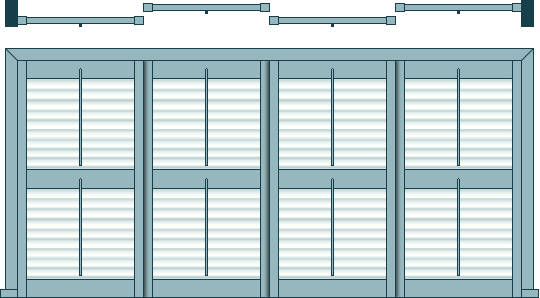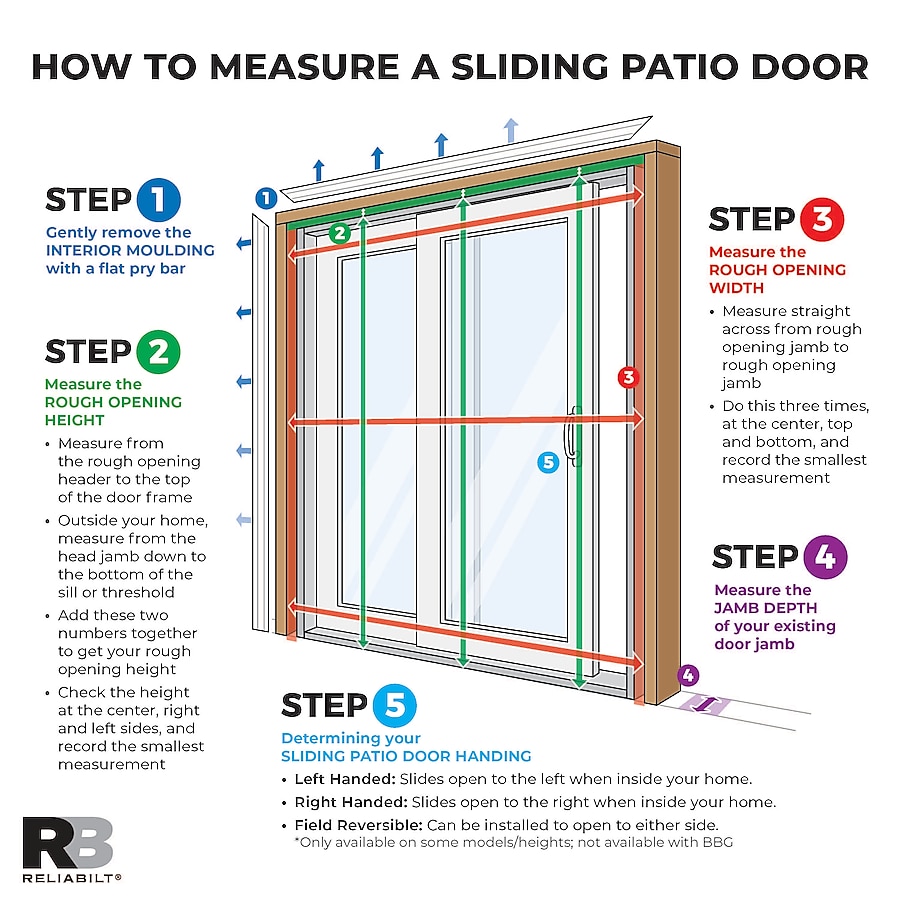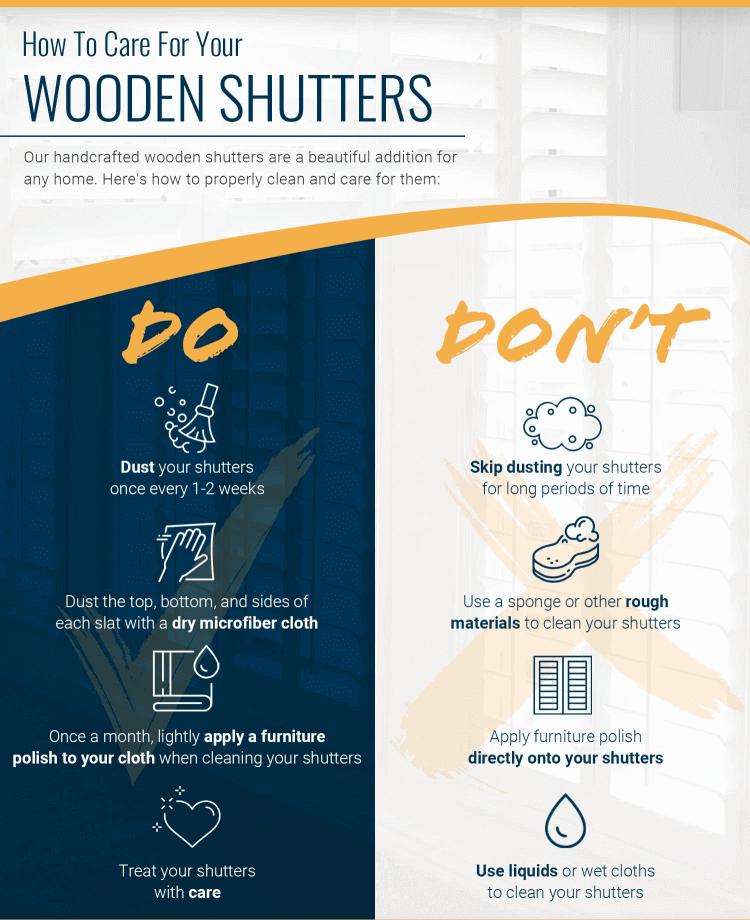Sliding doors are a great way to add natural light and space to your home, but they can also pose some challenges regarding window treatments. You want something stylish that provides privacy and easy access to your doors. That’s why bypass plantation shutters are an ideal choice for sliding doors.
Bypass plantation shutters are designed to slide on a track like your doors so you can easily open and close them. They also offer a classic and elegant look that complements any décor. But before you buy bypass plantation shutters for your sliding doors, there are some things you need to know. This article will cover the benefits, drawbacks, costs, and installation tips of bypass plantation shutters for sliding doors. By the end of this article, you will have a clear idea of whether bypass plantation shutters are right for you and your home.
The Benefits of Bypass Plantation Shutters for Sliding Doors
Bypass plantation shutters can enhance the appearance, functionality, and comfort of your sliding doors in many ways. Here are some of the benefits of choosing bypass plantation shutters for your sliding doors:

They create a seamless and elegant look that matches any style of décor.
Bypass plantation shutters have a timeless and sophisticated appeal that can suit any home design. Whether you have a modern, rustic, or traditional style, bypass plantation shutters can blend in seamlessly and add a touch of elegance to your sliding doors. They also come in various colors, finishes, and louver sizes so you can customize them to your preference.
They allow you to control the light and privacy you want in your room.
Bypass plantation shutters have adjustable louvers that let you regulate the amount of sunlight and air that enters your room. You can tilt them to create the perfect ambiance, whether you want a bright and airy feel or a cozy and intimate atmosphere. You can close them completely to block out unwanted views or noises from outside and enjoy your privacy and peace of mind.
They are easy to operate and slide along with your doors.
Bypass plantation shutters are designed to slide on a track like your sliding doors so you can easily open and close them. You don’t have to worry about cords, chains, or rods that can get tangled or break. You can slide them to the side to access your doors or back to cover them. They also have a smooth and quiet operation so that you won’t disturb anyone with your movements.

They are durable, energy-efficient, and easy to clean and maintain.
Bypass plantation shutters are made of high-quality materials that can withstand the wear and tear of daily use. They are also resistant to warping, cracking, fading, and peeling, so they can last long. They also have insulating properties that can help you save on your energy bills by keeping your room cool in the summer and warm in the winter. They are also easy to clean and maintain; you can wipe them with a damp cloth or vacuum cleaner.
The Drawbacks of Bypass Plantation Shutters for Sliding Doors
Bypass plantation shutters have their drawbacks and challenges. Here are some of the potential disadvantages of bypass plantation shutters for sliding doors:
They may only fit some sliding doors, especially those with narrow frames or uneven tracks.
Bypass plantation shutters require space and clearance to slide on the track, so they may only be compatible with some sliding doors. You may need help installing or operating the shutters if your sliding doors have narrow frames or uneven tracks. You may need to consult a professional to see if your sliding doors can accommodate bypass plantation shutters or if you need to make any modifications or adjustments.
They may block some of the view or access to your doors when closed.
Bypass plantation shutters cover the entire width of your sliding doors when closed so that they may obstruct some of the view or access to your doors. If you want to enjoy the full view of your backyard or patio, or if you’re going to open your doors completely, you may need to slide the shutters to the side, which can take up some of the wall space. Consider placing your furniture or other items near the sliding doors to avoid interference or collision with the shutters.

They may be more expensive than other window treatments.
Bypass plantation shutters are generally more costly than other window treatments, such as curtains, blinds, or shades, because they are custom-made and require more materials and labor. The price of bypass plantation shutters can vary depending on the size and number of your sliding doors and shutters, the material and finish of your shutters, such as wood, vinyl, or composite, and the quality and warranty of your shutters, such as custom-made or ready-made. You may need to compare different options and quotes to find the best value for your money.
The Costs of Bypass Plantation Shutters for Sliding Doors
The costs of bypass plantation shutters for sliding doors can depend on several factors, such as:
The size and number of your sliding doors and shutters.
The larger and more numerous your sliding doors and shutters are, the more expensive they will be, as they will require more materials and labor to make and install. The average cost of bypass plantation shutters for sliding doors can range from $300 to $1,000 per panel, depending on the size and style of the shutters.
The material and finish of your shutters, such as wood, vinyl, or composite.
The material and finish of your shutters can affect their price, durability, and appearance. Wood shutters are the most expensive but most durable and attractive, as they can be stained or painted to match any color scheme. Vinyl shutters are the cheapest but the least stable and beautiful, as they can fade or crack over time. Composite shutters are a middle option, as they are more durable and attractive than vinyl but less expensive and customizable than wood. The average cost of wood shutters can range from $500 to $1,500 per panel, vinyl shutters can range from $200 to $600 per panel, and composite shutters can range from $300 to $800 per panel.

The quality and warranty of your shutters, whether custom-made or ready-made.
The quality and warranty of your shutters can affect their price, performance, and longevity. Custom-made shutters are more expensive but more precise and tailored to your sliding doors, as they are made to measure and fit your exact specifications. Ready-made shutters are cheaper but less accurate and tailored to your sliding doors, as they are made to standard sizes and may not fit your doors perfectly. Custom-made shutters also tend to have longer and better warranties than ready-made shutters, as they are more likely to last longer and perform better. The average cost of custom-made shutters can range from $600 to $2,000 per panel, while ready-made shutters can range from $200 to $800 per panel.
The installation and labor fees, if any.
The installation and labor fees can vary depending on the complexity and difficulty of the installation, the location and accessibility of your sliding doors, and the expertise and reputation of the installer. The average installation and labor cost can range from $100 to $300 per panel, depending on the abovementioned factors.
Installation Tips of Bypass Plantation Shutters for Sliding Doors
The installation of bypass plantation shutters for sliding doors can be done by yourself or a professional, depending on your skill level, budget, and preference. Here are some tips and advice on how to install bypass plantation shutters for sliding doors, either by yourself or by a professional:
How do you measure and order the right size and style of shutters for your sliding doors?
Before you order your shutters, you need to measure your sliding doors and decide on the size and style of your shutters. You need to measure the width and height of your sliding doors and the depth and clearance of the frames and tracks. You also need to decide on the number and configuration of your shutters, such as how many panels you want, how they will slide, and which direction they will open. You must also choose your shutters’ color, finish, and louver size to match your décor and preference. You can use online calculators or guides to help you measure and order your shutters or consult a professional to do it for you.

How do you prepare and clean your sliding doors and tracks before installing the shutters?
Before installing your shutters, you must prepare and clean your sliding doors and tracks to ensure a smooth and successful installation. You must remove any existing window treatments, such as curtains, blinds, or shades, from your sliding doors and store them safely. You also need to clean your sliding doors and tracks, using a damp cloth or a vacuum cleaner, to remove any dust, dirt, or debris that may interfere with the installation or operation of the shutters. You must also check your sliding doors and tracks for any damage or defects, such as cracks, dents, or bends, and repair.
How do you attach and adjust the shutters on the track and test their functionality?
After you receive your shutters, you need to attach and adjust them on the track and test their functionality. You must follow the instructions and hardware that came with your shutters or use the tools and materials you have prepared. You need to attach the track to the top of your sliding doors using screws or brackets and make sure it is level and secure. You must also connect the shutters to the track using clips or hooks to ensure they slide smoothly and evenly. You must also adjust the louvers using the tilt rod or the hidden mechanism and ensure they open and close properly. You also need to test the functionality of your shutters by sliding them to the side and back, checking if they align with your doors, and covering them completely. You must also prevent gaps, noises, or malfunctions and fix them if necessary.
How do you care for and maintain your shutters after installation?
After you install your shutters, you need to care for and maintain them to keep them in good condition and extend their lifespan. You need to clean your shutters regularly, using a damp cloth or a vacuum cleaner, to remove any dust, dirt, or stains that may accumulate on the surface or between the louvers. You must also avoid using harsh chemicals or abrasive materials, which may damage your shutters’ finish or material. You must inspect your shutters periodically for any signs of wear and tear, such as cracks, chips, or loose parts, and repair or replace them if necessary. You must also lubricate the track and the hinges using a silicone spray or a similar product to ensure the smooth and quiet operation of your shutters.

In conclusion, bypass plantation shutters are a great option for sliding doors, as they offer many benefits, such as style, privacy, light control, ease of use, durability, and energy efficiency. However, they also have some drawbacks, such as compatibility, view obstruction, cost, and installation. Before you buy bypass plantation shutters for your sliding doors, you need to consider these factors and compare different options and quotes. You also need to measure and order the right size and style of shutters, prepare and clean your sliding doors and tracks, attach and adjust the shutters on the track, and care for and maintain your shutters. By following these tips and advice, you can enjoy the beauty and functionality of bypass plantation shutters for your sliding doors.

